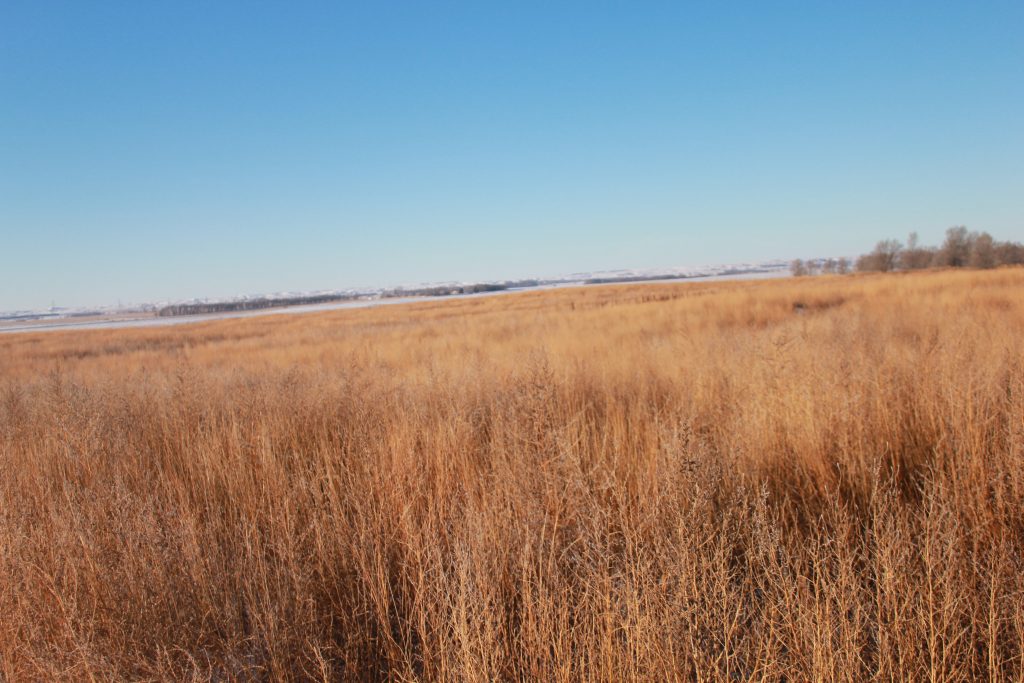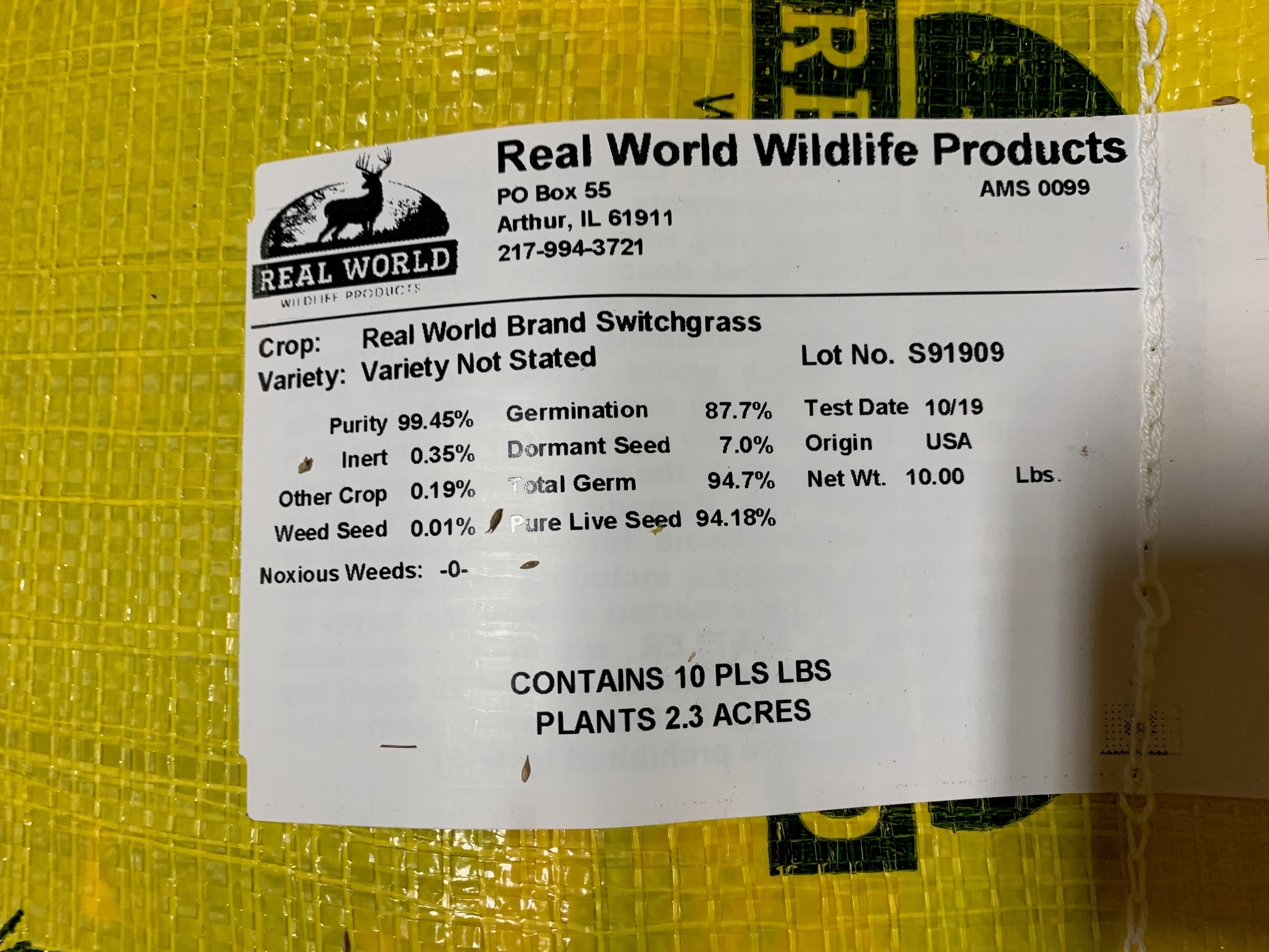
Understanding Stratification of Switchgrass Seed
Let me start by sharing a personal story from several years ago. I was working to turn my own property into a whitetail paradise and the one thing I really needed was quality bedding cover. In my part of the world red cedar trees are a great source of cover for wildlife so I set out to get some cedars growing randomly on my farm.
One fall I decided to plant some cedar trees by seed so I grabbed a 5-gallon bucket and over the course of several days I drove around looking for cedar trees which had those small purple seeds still attached to the branches. I would then peel off those seeds into the bucket. When the bucket was about ¾ full of cedar seed I decided I had seen enough of this project and went about spreading the seed all over my farm. Three years later I still did not have a red cedar growing on my property! That project was a total failure and like much of the information I share, this one was learned the hard way.
This project took place about 25 years ago but that wasted time and labor provided a lesson that I never forgot – Some seed needs to be stratified before it will grow. My research later taught me that red cedar seed must be treated with an acid to remove a coating around the seed before it can be grown. In the wild a lot of cedar seed gets eaten by birds and later excreted. When this seed goes through the digestive system of the bird the enzymes in the bird’s digestive system removes the seed coating and it is then able to grow. Have you ever noticed the abundance of volunteer cedars growing under powerlines and fences where birds like to roost?
Some years later I started a tree nursery business and learned that a lot of different seeds will have a much higher germination rate if it is first stratified and the stratification process is different for different seed species. This brings us to the primary topic of this article – stratification of switchgrass seed.
Switchgrass seed is very small and is protected by a hard outer-shell. This shell that protects the seed can also prevent or delay its germination thus stratification of switchgrass seed can improve germination rates. The process of freezing and thawing is what can soften or crack this protective shell around switchgrass seed. This is why Real World recommends frost-seeding switchgrass into a prepared plot as early as possible in the winter. The more freezing and thawing that this seed is exposed to, the better the germination rates.
We can also stratify switchgrass seed by exposing it to freezing and thawing while still in the bag. Personally I like to stratify the switchgrass seed that I use on my own projects by putting the bag of seed into a freezer for a couple of weeks and then removing it to warmer temps for a week or so and then repeat the process three or four times. This process is simple and it does work.
This leads us to the question – Does switchgrass seed HAVE TO BE stratified? The answer is “no”, especially if the seed is planted in the fall, winter or early in the spring as natural stratification will take place. In late spring and early summer plantings there will be a certain percentage of seed that will germinate without stratification and some of the seed that does not germinate when planted can lay dormant in the soil and actually germinate the following year. Ideally, we want the highest germination possible the first season and thus the reason we sometimes stratify switchgrass seed.
So lets look at a seed analysis tag from a bag of Real World switchgrass to help you better understand stratification with switchgrass seed. For the record, any seed sold must have a current analysis tag to be legal. Real World sends their seed to an independent lab who does this testing for us and that is where we get the info that is included on the analysis tag on every bag of Real World seed. In this example the seed test showed a germination rate of 87.7% with 7% “dormant seed”. This means that in the test at the lab, 87.7% of the seed tested actually germinated while 7% was good seed but did not germinate during the test. This 7% dormant seed is seed that will benefit from stratification and then germinate which results in an actual germination rate of 94.7%.
So what does this mean to the land manager looking to grow switchgrass? To summarize, it is best to plant switchgrass seed as early as possible so that some natural stratification takes place through the freezing and thawing. If early planting is not possible, doing a stratification through freezing and thawing of the seed in a freezer will likely improve germination rates some. Even if this does not happen however, with quality seed such as that sold by Real World Wildlife Products, you should still see acceptable germination rates.
Let me close with a couple of more bits of advice when planting switchgrass. First of all, site prep is very important. The planting site should be totally free of weeds and grasses. The two biggest mistakes we see customers make with switchgrass is planting the seed too deep; 1/8” is ideal and anything more than ¼” is too deep, and not controlling weeds. Switchgrass is very slow to germinate and cannot compete with faster growing weeds which will quickly choke it out. When planting switchgrass do not expect to see anything for at least 30-45 days after the soil temps have reached 65-degrees. Growing warm-season grasses like switchgrass will require more patience than anything you have ever grown!

One final note, if your Real World switchgrass planting was a failure, the problem was most likely something besides the seed. Our seed is processed in lots of several tons at a time. If a particular lot of seed was bad we would be hearing from hundreds of customers, not just a couple. There was no way you got a bad bag of seed and everyone else did not when it all came from the same container of several tons. I don’t say this to point the finger elsewhere but to get you to review your entire planting process to find the true problem when you have an issue. Real World switchgrass makes for some of the best whitetail bedding cover that I have ever seen but getting it started requires more attention to details than many other plant species. With a little planning and extra attention your switchgrass planting can be a huge success.
To learn more about Real World Switchgrass, please click here